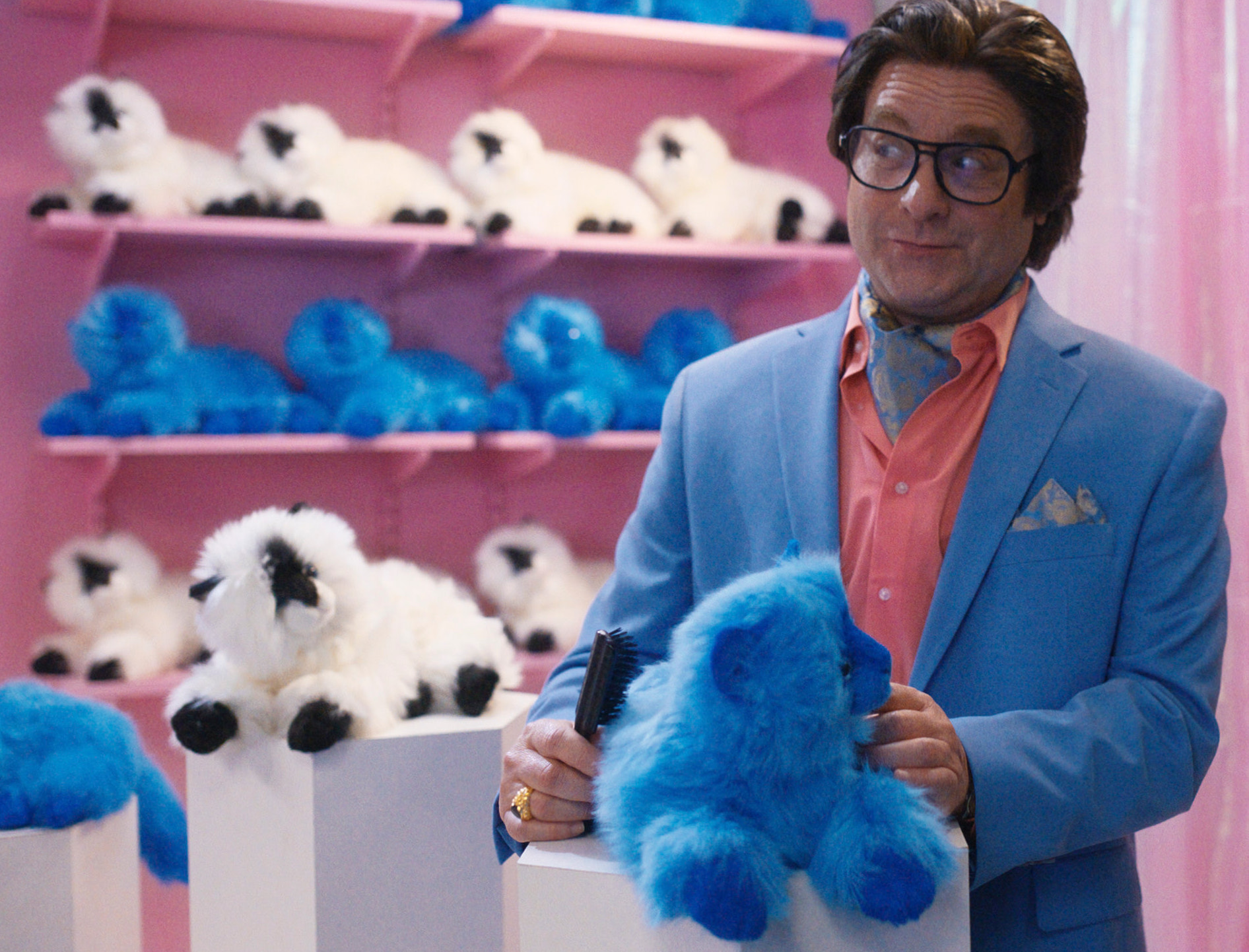Another week, another toy story, in the wake of Barbie. And another origin-of-hit-product story, too, after Air. The Beanie Bubble, though, has none of the surprisingly gripping appeal of Nike’s rise and rise via a single trainer design, nor the (sporadic) wit and bounce of Greta Gerwig’s mega-hit. It’s all corporate idiocy, shabby dealings, and misogyny. And failure is nowhere near as fascinating as success.
The saga of the small semi-stuffed toys known as Beanie Babies was the tulip fever of the late 1990s. A fading manufacturer, Ty Warner, seized upon the idea of downsizing his product line so the toys were more easily portable. But because his distribution and marketing methods were relatively slow and sclerotic, relying on trade conventions for sales pre-internet, supply of each of his Beanie Babies outstripped demand – and that made them highly collectible.
At one point in the 1990s, more than half the US population owned a Beanie Baby. Once the buying public realised their potential resale worth, the market went crazy and their investment value rocketed. Ty became the most profitable toy-maker in the world.
This isn’t a hopeless storyline: it could have been a fascinating insight into the way, through the law of unintended consequences, the internet changed everything. But the writer of the screenplay (which is based on a 2015 book by Zac Bissonnette), Kristin Gore, who also co-directs with Damian Kulash, doesn’t trust that narrative strand enough and subsumes it into a bigger story of greed, rampant egotism, and male chauvinist piggery, all centred on one man, Beanies manufacturer Ty (Zach Galifianakis, pictured below).  One of Ty’s young temps, Maya (Geraldine Viswanathan), a bright spark with aspirational parents, who want her to become a doctor, immediately spots the power of the web as a marketing tool and is allowed by Ty to harness its power in promoting the Beanies. (He still thinks he should enlist Jehovah’s Witnesses to spread the word about his product, through their door-to-door work.) But after a while she also realises the internet will ultimately kill his business, by prompting him to pursue a strategy of international expansion and ever more growth that will saturate the market with Beanies and render them valueless.
One of Ty’s young temps, Maya (Geraldine Viswanathan), a bright spark with aspirational parents, who want her to become a doctor, immediately spots the power of the web as a marketing tool and is allowed by Ty to harness its power in promoting the Beanies. (He still thinks he should enlist Jehovah’s Witnesses to spread the word about his product, through their door-to-door work.) But after a while she also realises the internet will ultimately kill his business, by prompting him to pursue a strategy of international expansion and ever more growth that will saturate the market with Beanies and render them valueless.
Ty, of course, ignores her warnings and also claims all her innovations as his own. As his wealth balloons, his avarice leads him to sideline and betray all the key women who have assisted him in amassing it: his former partner at the office and in bed for 10 years, sales whizz Robbie (Elizabeth Banks), as well as the woman who replaced her in his bed, single-mother Sheila (Sarah Snook). He feigns to adore Sheila’s two young daughters, allowing one of them to get the credit for designing a Beanie called Spooky, but then reneges on this arrangement.
So we get Ty’s unpleasant personality in close-up, and it has no redeeming features. How is he remotely attractive to women, long term, as he crucially is here? Generous gifts only get you so far. He isn’t even presented as charismatic; all his success is attributed to the three women steering his thinking, two of whom he is sleeping with. This may be accurate, but even as a feminist-revenge story, it turns out to be fairly threadbare. Robbie’s hard-scrabble early life in Arkansas and her wheelchair-bound husband go largely unexplored; Sheila’s former partner, father of her children, ditto.
What’s happening out in everyday America is occasionally glimpsed on TV screens or in office anecdotes but again remains under-examined. The woman who claims to have set the whole Beanies trend in motion in her Chicago suburb appears briefly, only to be swatted down and sued by Ty for running a radio show and magazine about the Beanies without his say-so. That’s it. The film seems as unconcerned about her and what she represents, the social context of the Beanie bubble, as Ty is.
Part of the problem is that the script is busy dressing up its material by wrangling it into a pretzel shape, where Robbie’s departure from the company on Maya’s first day as a temp in 1993 is steadily looped back to and reprised in full at the end (Sheila is meanwhile waiting three hours for Ty to turn up to talk lighting designs at the first of his new mansions). This approach is more annoyingly confusing than intriguing. Characters and events move in and out of focus in a way that interrupts their development, not to mention our sense of chronology.
The only bonus of the pretzel-ing is that it can create slick segues between scenes a decade apart, such as Ty telling two different women the same lie. An audience invested in the film shouldn’t need that. Worse, to help possibly disoriented viewers, the year is displayed on-screen in big figures that update or backdate as necessary while we watch, always a bad sign, as is a voiceover pitching in comments to help signpost the action.
It’s all a sad waste of the talents of the cast, especially the always watchable Banks and Succession star Snook. Galifianakis isn’t so much miscast as mishandled: he’s a creditable character actor who, in a different version of this material, would turn in a striking cameo as Ty – but you really don’t want to hang out with him for longer than that.














Add comment